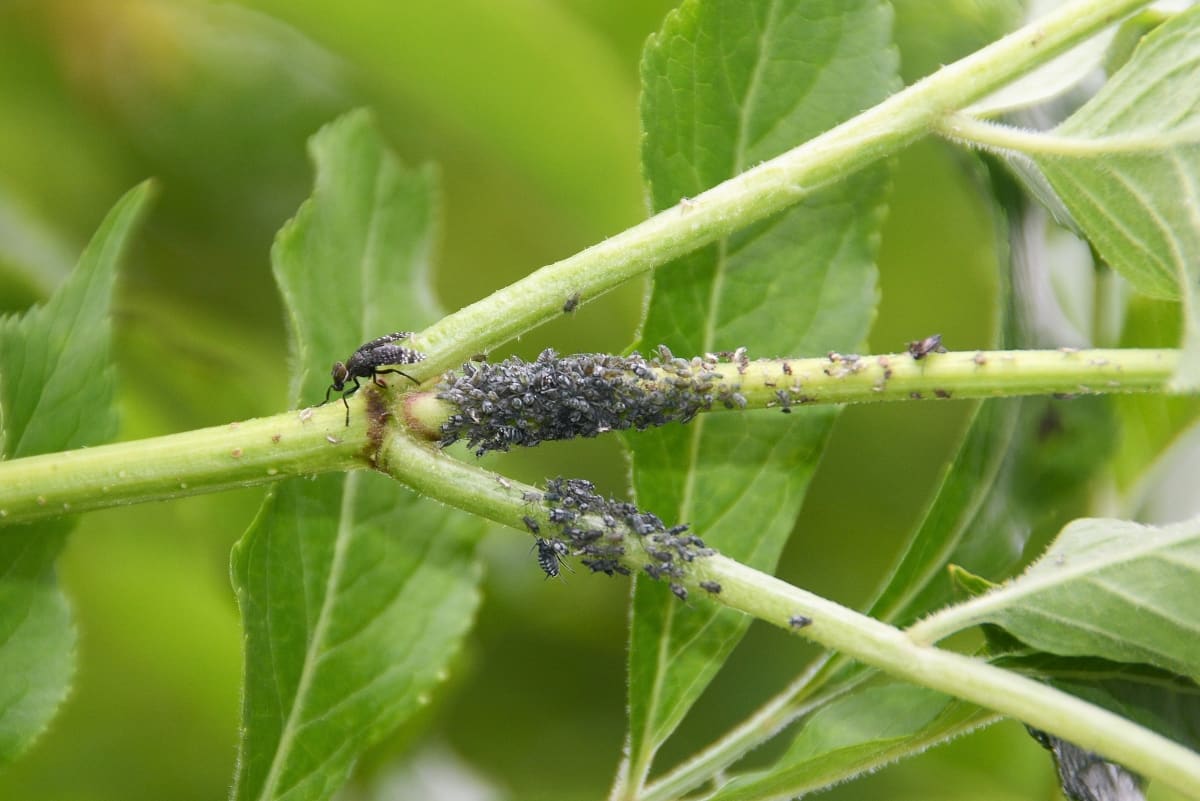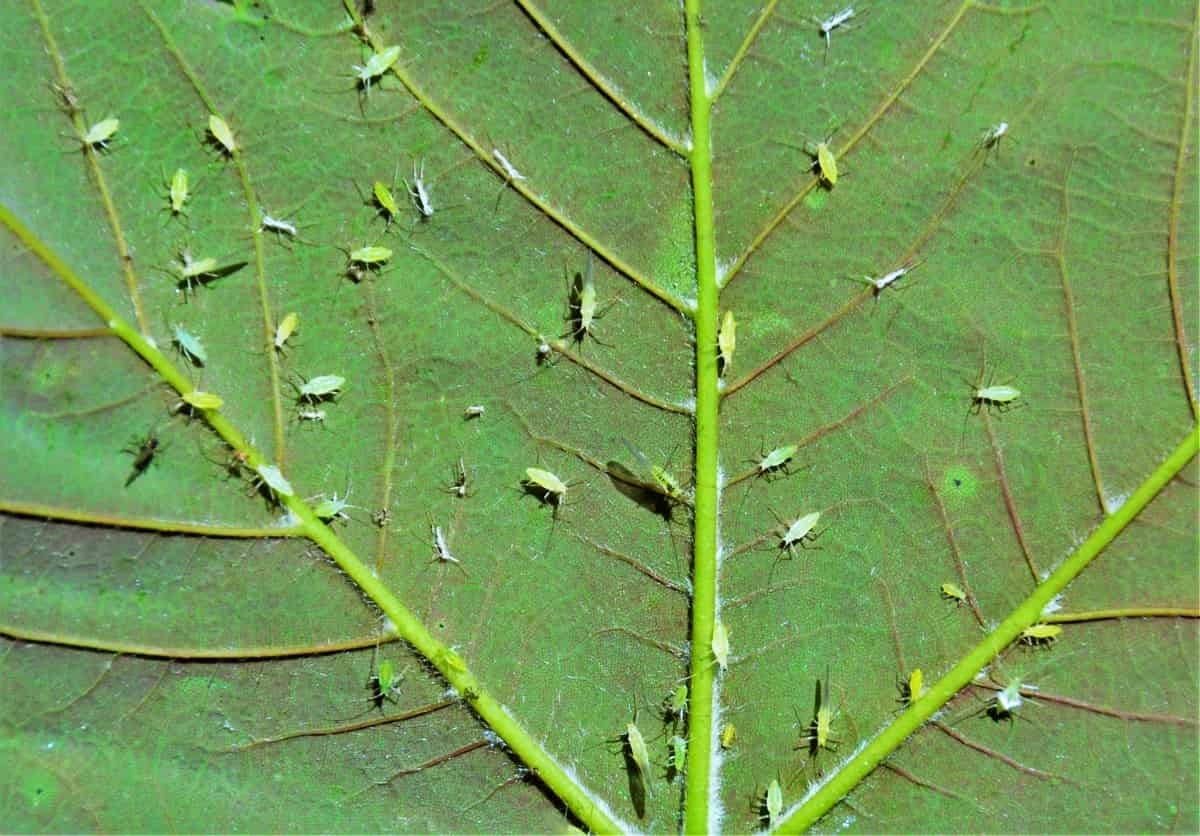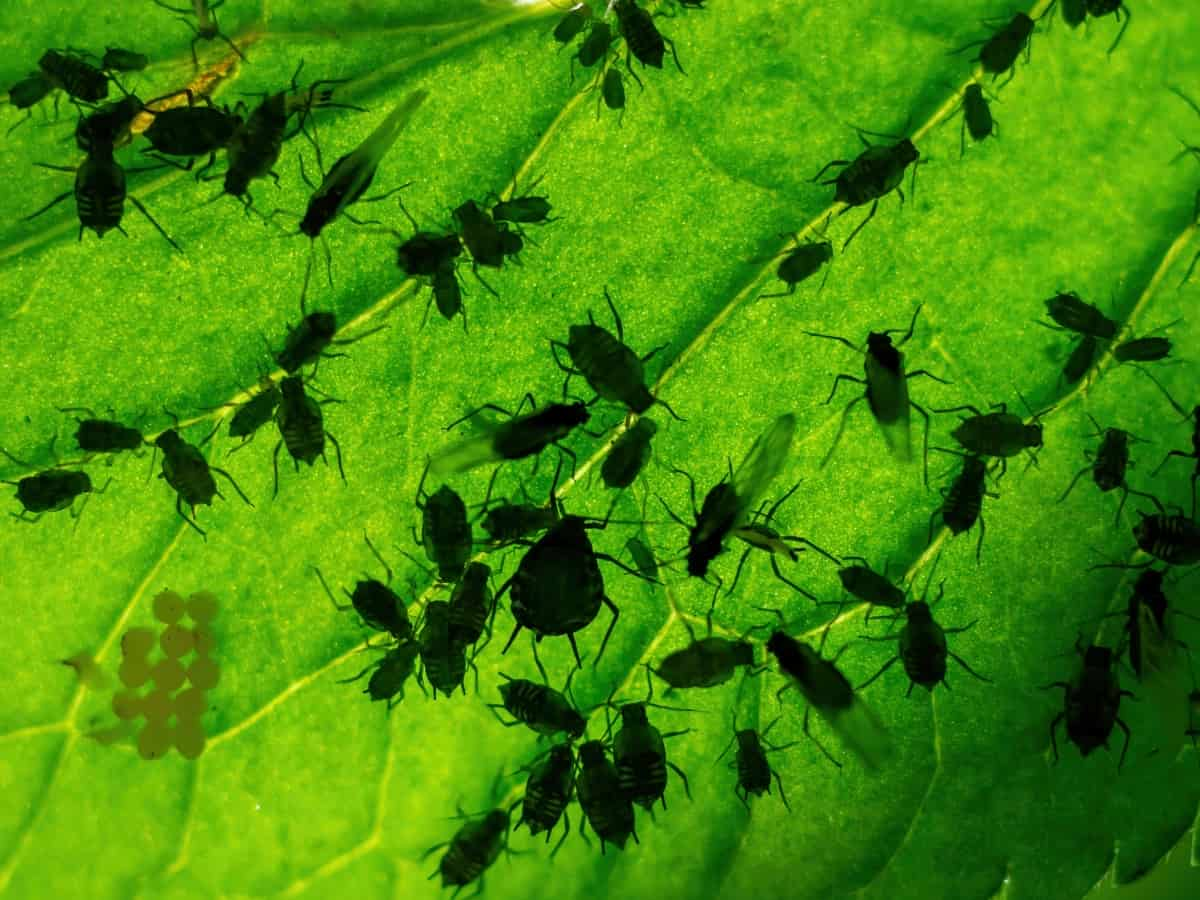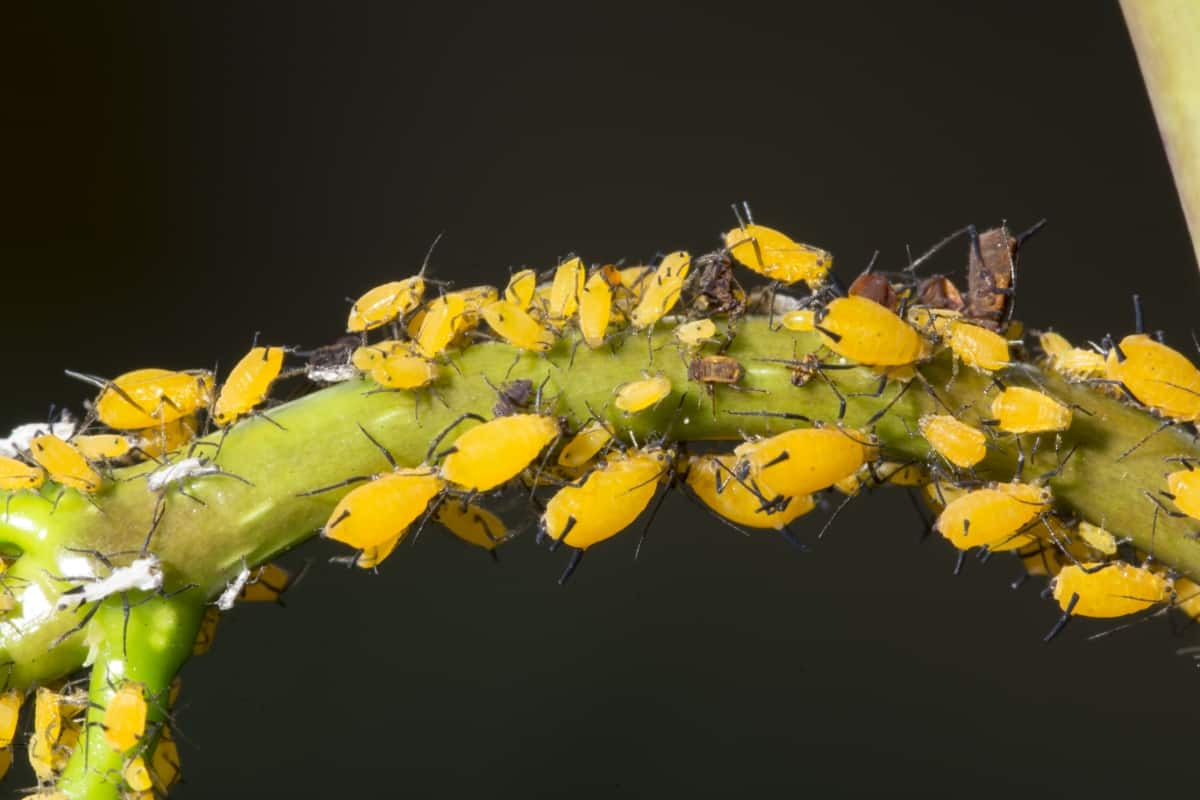Aphids are those tiny pests that can wreak havoc on our crops. When they feed on an infected plant, they pick up these pathogens and spread them to healthy plants while moving around. The presence of aphids in our crops poses a significant threat to agricultural productivity and profitability. Monitoring aphid populations allows us to detect infestations early on before they become major problems.

Aphid Monitoring Techniques
Understanding Aphid Monitoring Techniques
Aphids, those pesky little insects that can wreak havoc on our crops. There are several effective techniques for monitoring Aphids and implementing integrated pest management strategies. Taking a proactive approach to pest control involves using plant insecticide sprays as part of an integrated pest management strategy.
Regularly spraying susceptible plants with approved insecticides can help prevent large infestations from occurring by killing off any early-stage nymphs or adults before they have time to reproduce. By closely monitoring aphid populations, farmers and gardeners can take proactive measures to minimize crop damage.
Direct Observation: A Simple and Effective Method
Direct observation is a straightforward and efficient method for monitoring aphids in your crops. It involves physically inspecting the plants to detect any signs of aphid infestation. This needs attention to detail and regular monitoring to catch the early stages of an infestation. To utilize direct observation effectively, start by examining the plant leaves, stems, and buds. Look for clusters or colonies of aphids as well as their characteristic sticky residue known as honeydew. Aphids come in various colors depending on the species, so be sure to familiarize yourself with common aphid colorations.
Yellow Sticky Traps: A Non-Invasive Method for Monitoring Aphids
These traps work by attracting and capturing the adult aphids, preventing them from causing further damage to your plants. The yellow color of the trap serves as a visual attractant for the aphids, luring them towards it. Once they land on the sticky surface, they become trapped and unable to escape. This allows you to monitor their presence and population levels easily.
In case you missed it: Impact of Aphids on Ornamental Plants: Common Species and Management Practices

The advantage of using yellow sticky traps to control aphids is that they are easy to set up and require minimal maintenance. Regularly check the traps for any captured aphids and record your findings. These traps not only help with early detection but also serve as a valuable tool in integrated pest management (IPM) strategies. In addition to their effectiveness in trapping adult aphids, yellow sticky traps can also capture other flying pests like whiteflies and leafhoppers. This makes them versatile tools for overall pest monitoring in your crops.
Soapy Water Solution: A Homemade Aphid Monitoring Tool
This homemade tool can help you keep track of aphid populations in your garden without resorting to harmful pesticides. To create this monitoring tool, mix dish soap with water in a spray bottle. The dish soap is used as a surfactant, breaking down the surface tension of the water and causing it to stick to the aphids. Next, choose an infested plant or area where you suspect aphids may be present.
Spray the soapy solution directly onto the leaves, making sure to cover all surfaces thoroughly. The mixture will suffocate and kill any aphids it comes into contact with. After spraying, wait for a few minutes and then carefully inspect the plant. By regularly checking your plants with this homemade tool, you can monitor changes in population levels over time and take appropriate action if needed.
Pheromone Traps: A Specific Method for Monitoring Aphid Mating
Pheromones are chemical substances released by insects that serve as signals for communication and attraction. The advantage of using pheromone traps lies in their specificity – they target only male aphids rather than capturing other beneficial insects. This allows farmers and gardeners to focus their pest control efforts on areas experiencing high levels of infestation without harming non-target organisms.
Furthermore, because this technique relies on attracting male aphids through sensory cues rather than physical contact or invasive methods, it provides an environmentally friendly alternative for monitoring these pests’ reproductive behavior.
Plant Insecticide Sprays: A Proactive Approach to Aphid Monitoring
These insecticide sprays are designed to target and eliminate aphids before they can cause significant damage to crops. The advantage of using insecticide sprays is that they can be applied directly onto plants, targeting areas where aphids tend to congregate. This targeted approach helps ensure that the spray reaches its intended target, effectively eliminating aphids and preventing further infestation. There are various types of plant insecticide sprays available on the market, each with its unique formulation and mode of action.
It’s important to note that when using plant insecticide sprays for aphid monitoring, it’s crucial to follow the instructions provided by the manufacturer. In addition to regular application of plant insecticide sprays, it’s also important for farmers and gardeners to practice integrated pest management (IPM) techniques. This holistic approach combines various methods such as crop rotation, proper sanitation practices, biological control agents, and cultural controls to manage pests like aphids effectively.
Leaf Vacuum Sampling: A Method for Collecting Aphid Data
Using a specialized vacuum device, researchers or farmers can easily collect samples of leaves infested with aphids. This method is useful when dealing with large fields or crops that may have extensive aphid populations. The process involves attaching the leaf vacuum apparatus to a backpack and walking through the field, gently suctioning up leaves along the way. The collected leaves are then carefully examined under a microscope or magnifying glass to identify and count the number of aphids present.
In case you missed it: How to Get Rid of Aphids on Okra Naturally: How to Control with Natural and Organic Treatment

Leaf vacuum sampling not only provides quantitative data on aphid populations but also allows for in-depth analysis of other factors such as species composition and life stage distribution. This detailed understanding enables more targeted interventions tailored specifically to combatting aphids effectively. Leaf vacuum sampling serves as an invaluable tool in monitoring aphids by providing precise data on their presence in crops.
Mapping and GIS: Advanced Techniques for Monitoring Aphid Distributions
By utilizing these advanced techniques, researchers and farmers can gather valuable data to understand better the patterns and movements of aphids in agricultural fields. GIS also enables researchers to analyze environmental factors that may influence aphid distributions. This knowledge can help develop proactive measures for preventing aphid infestations before they occur. Furthermore, mapping technology allows for real-time monitoring of aphids using remote sensing techniques such as satellite imagery or unmanned aerial vehicles (UAVs).
These tools provide a birds-eye view of agricultural landscapes, allowing researchers to detect early signs of aphids before they become widespread. Mapping technology combined with GIS offers powerful tools for monitoring Aphid distributions on a large scale. These advanced techniques not only provide valuable insights into the movement patterns of pests but also enable stakeholders in the agriculture industry to make informed decisions about integrated pest management strategies.
Biological Control: A Holistic Approach to Aphid Monitoring and Management
The most commonly used biological control technique is the introduction of natural predators or parasitoids. Ladybugs, lacewings, and hoverflies are known to feed on aphids, making them valuable allies in your battle against these pests. By encouraging their presence through habitat manipulation or releasing commercially available beneficial insects, you can establish a natural balance in your crops.
When applied strategically, they can effectively suppress aphid populations while minimizing environmental impact. In addition to predator introductions and fungal applications, there are also microbial-based insecticides that specifically target aphids while sparing other beneficial insects. These products contain bacteria that produce toxins harmful only to certain pest species like aphids.
Frequently Asked Questions (FAQ) on Aphid Monitoring
Which Tools Are Commonly Used for Aphid Monitoring?
Various tools can aid in aphid detection, such as yellow sticky traps, sweep nets, visual inspections, suction samplers, and even digital technology like remote sensing or imaging systems.
What is the Purpose of Aphid Monitoring?
The main objective of aphid monitoring is to identify infestations at an early stage before they cause significant harm to plants. This allows for intervention and prevents the need for more drastic control methods.
How Can I Monitor for Aphids?
Monitoring can be done through visual inspection or by using specialized tools such as yellow sticky traps or suction devices like aspirators. Regularly checking plant leaves and stems is essential to catch any signs of aphids.
What are Some Signs of an Aphid Infestation?
Common signs include distorted or curled leaves, stunted growth, honeydew (a sticky substance), the presence of ants near plants (they feed on honeydew), or visible clusters of small insects on plant parts.
In case you missed it: Rose Aphid Pest Management in Rose: Symptoms, Treatment, Chemical, Biological, and Organic Control

Conclusion
Aphids are tiny insects that have the potential to wreak havoc on your crops and garden. Aphids are not your ordinary pests; they are voracious feeders that suck the sap out of plants, causing stunted growth and deformed leaves. By closely observing their presence and population trends, you can take timely action to keep them under control and maintain healthy plant growth.
- Beneficial Insects in Pest Management
- Natural Solutions for Pest Control in Flower Gardens
- Types of Fungicides Used in Agriculture
- Common Issues in the Fruit Development Stage of Pomegranate Farming
- Fruit Development Issues in Papaya: Easy Solutions and Treatment
- Soil-Borne Diseases and How to Protect Your Plants
- Practices to Prevent Disease Spread in the Garden
- From Wilted to Thriving: How to Treat Root Rot Naturally in Houseplants
- Natural Remedies to Cure Brown Spots on Fig Tree Leaves